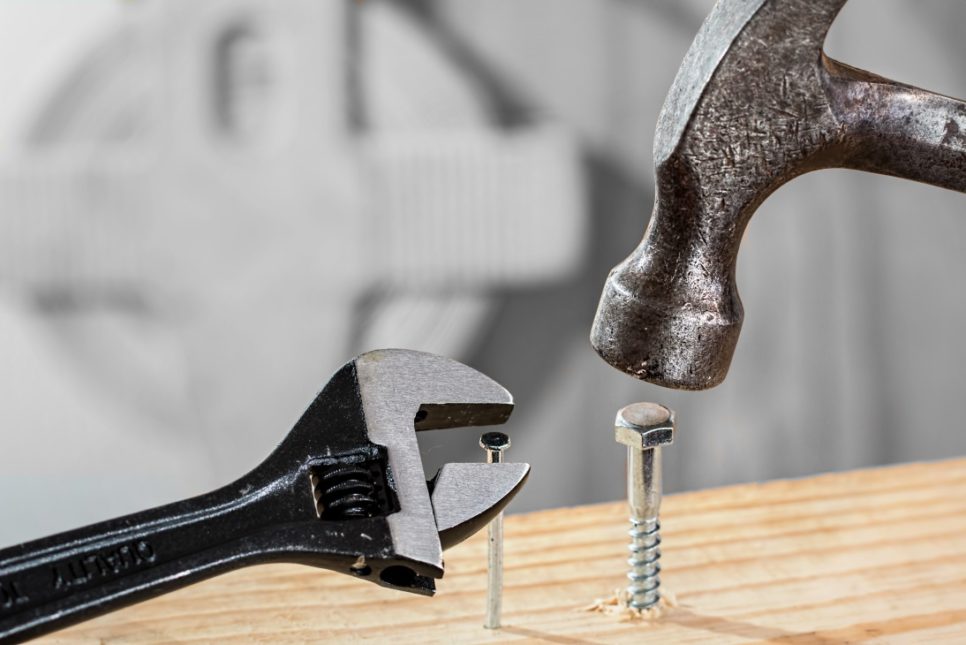Ask the Experts: Ergonomics and Tool Selection
If you missed our last webinar with Marty Frame on Ergonomic Principles in Design and Choice of the Correct Hand Tool it’s available now for review. Marty gave us a wonderful presentation on how improper too use for a specific task can obstruct blood flow, inflame tendons and increase muscle fatigue, all of which can lead to injury as well as discussing tips for better tool selection.

In the end we weren’t able to answer everyone’s submitted questions during the broadcast but Marty was gracious enough to pen some follow-up responses to the remaining questions. Check them out below!
Q: How would you describe the action of the index finger depressing a mouse button? Would you consider it a modified pinch as the thumb is opposed on the medial side while gripping the mouse?
A: It can be a modified pinch. Ideally the thumb should be resting on the mouse and not gripping, though some people do tend to over grip the mouse. The prehension pattern can also be considered an internal precision pattern,Q: Some custodians seem to want to add foam build up to tools like brooms and dustpan handles. I don’t think this is necessary and sounds maybe like the softness is a problem. I could also see how this might increase the diameter too much. Thoughts?
A: Is the custodian building up to gripping surface to increase the diameter and improve their ideal posture grip with index finger just touching the thumb, is it a protective use because of splinters from a wood handle, do they feel they can’t get a good grip on the handle because it is too slick or do they just feel a softer surface is more comfortable? Further discussion with the workers would be helpful. If it is too soft or the diameter is too large this may increase their grip force and should be avoided. A rubber grip surface will help with improving control. I have also found that some workers prefer to wear leather type work gloves with some palm padding to improve comfort, prevent splinters and improve the grip surfaceQ: What is your opinion of dermatome spinal maps in determining ergonomic discomfort?
A: I don’t think it is very helpful because dermatomal patterns correlate with spinal nerves and most WRMSD’s involve sprains and strains rather than nerve root involvement.Q: I have mainly seen antivibration gloves with gel or foam on the palms. Are there gloves with vibration dampening material on the fingers and tips?
A: One glove that has finger padding and is ISO certified is the Intra-FIT Professional Anti-Vibration Glove EN ISO 10819:2013 Certified, EN3882112, Grip Long Lasting, Good for Drilling Equipment Operation, Tool Handling, …Q: Thanks so much for this! We’re having troubles finding worthwhile anti-vibration gloves for use with jackhammers. Do you have any suggestions?
A: Jack hammer use introduces full body vibration. ISO certified gloves will help to a certain extent but use of the jackhammer produces a high level of vibration. I have seen a forklift adaption that eliminates the person from holding the jackhammer and this might be a better long term solution.Q: Any recommended vendors for ergonomic-friendly hand tools?
A: No Tomboy Tools is a good source for tools with smaller handle diameters which helps the employee with smaller hands.Q: Do you know of reference material to determine recovery time for precision tasks that take into consideration multiple risk factors?
A: I do not know of anything specifically for recovery time. You can use the Hand Activity Level-Threshold Limit Value (HAL-TLV) tool for determining if the total of effort and frequency are a problem. Thomas E. Bernard at University of South Florida also has some charts that you may use to estimate recovery times from effort.
If you missed Marty’s awesome webinar, fear not! It’s available to view HERE.
Do you have any questions or experience surrounding tool choice and use? Let us know in the comments!


